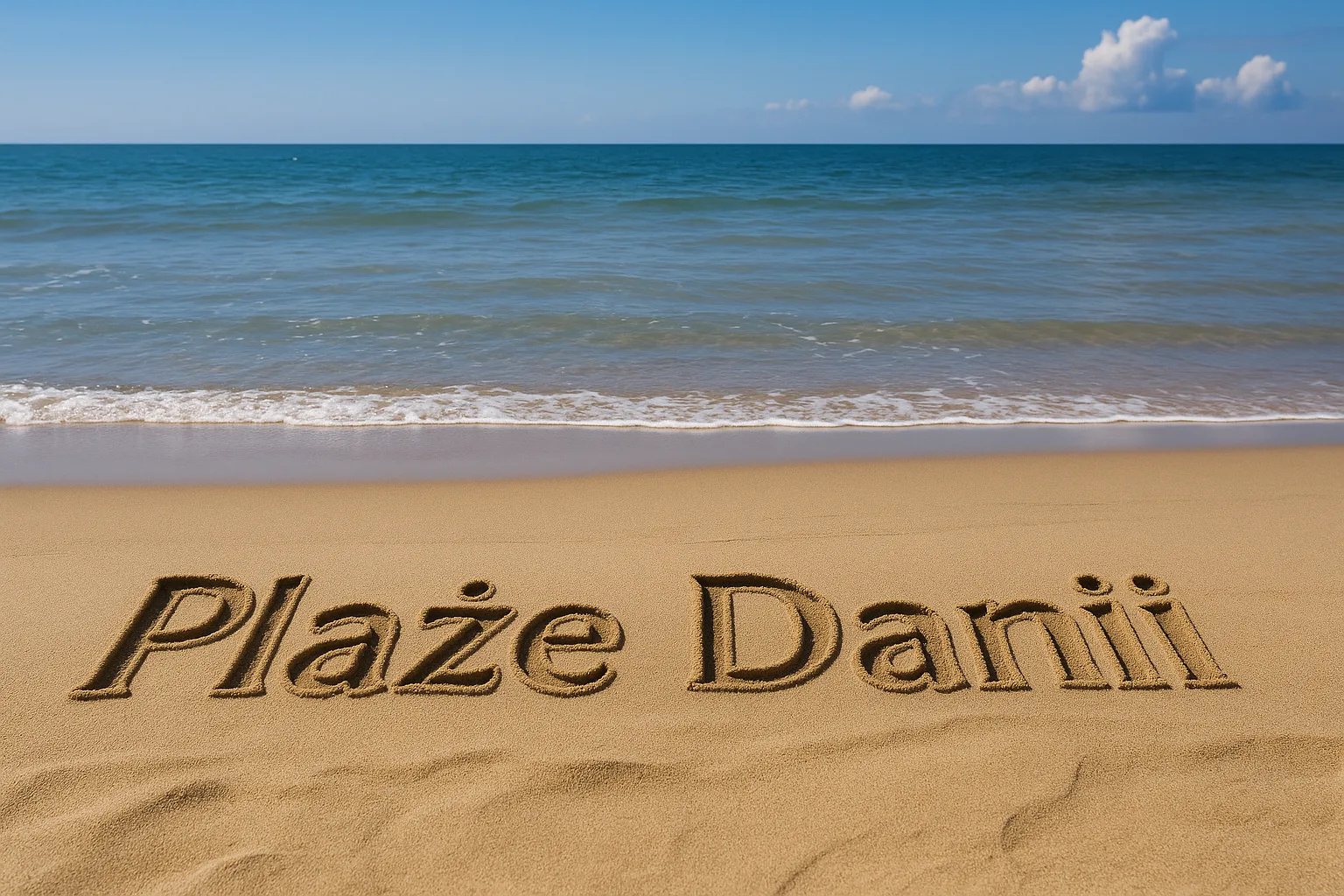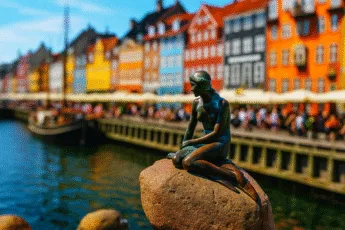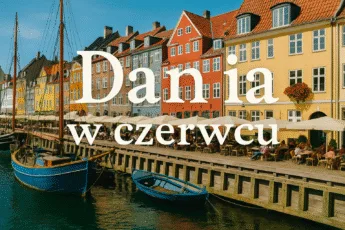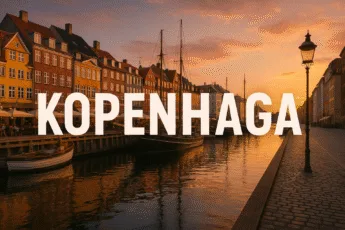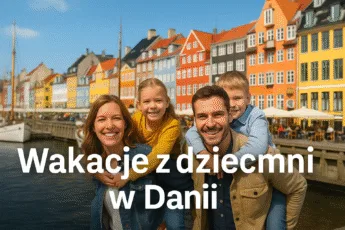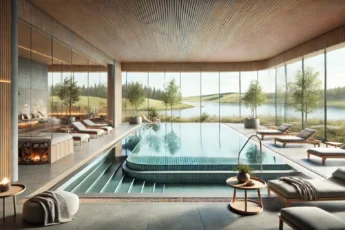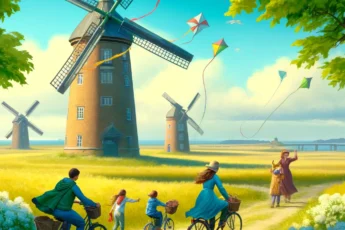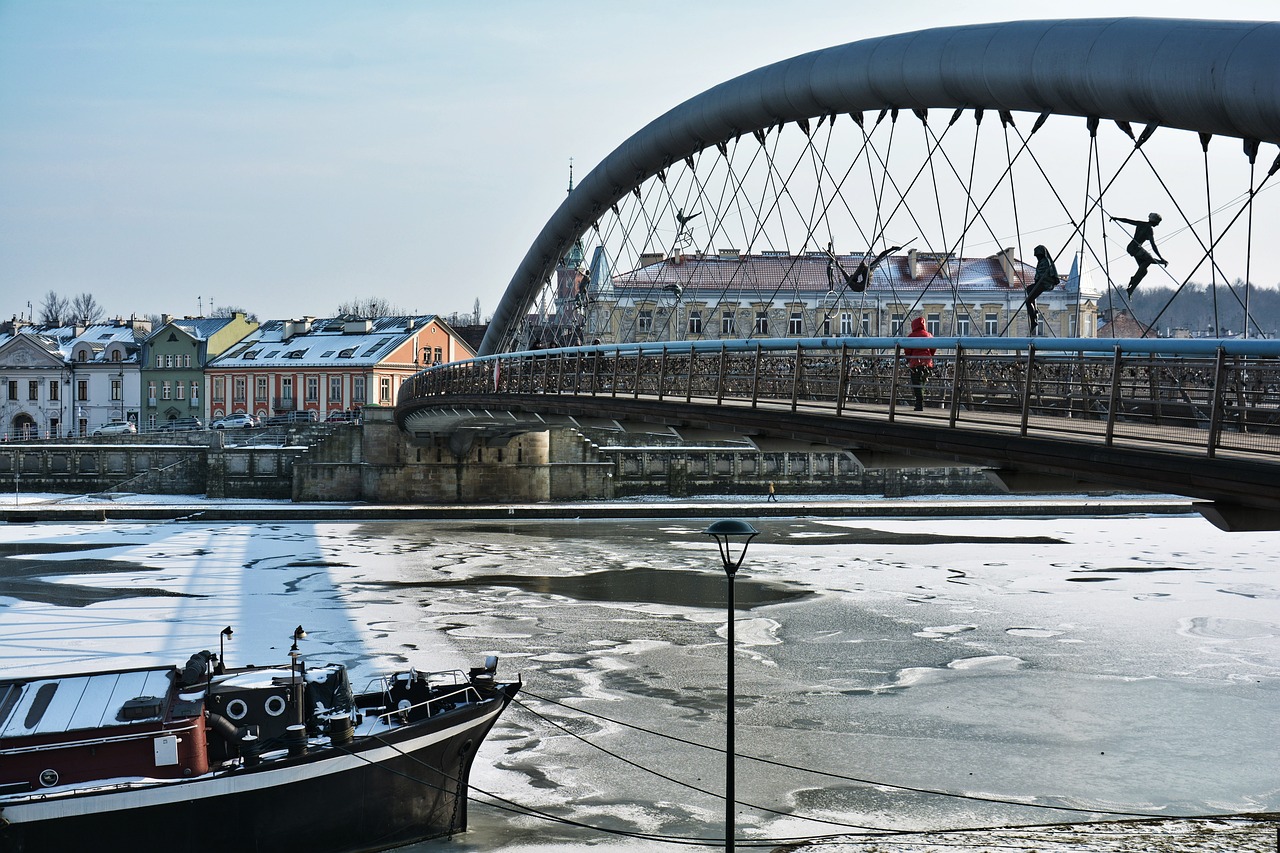Denmark is one of the most orderly and underestimated holiday destinations by the sea. In 2025, interest in the coast of this country will increase, especially among tourists from Poland and Germany. Reason? The combination of high -quality infrastructure, calm beaches, a clean Baltic and a predictable climate. The Danish coast is a total of over 7,300 km of shoreline, of which hundreds of kilometers are natural, wide beaches. Lack of crowds, a developed network of bicycle paths and a high level of safety make dishes an alternative to Croatia, Italy or even the Polish coast.
In this guide you will find detailed information about the best beaches, bath conditions, campsites, prices, infrastructure and nature. Each chapter is based on real data, without speculation and simplifications - so that you can plan a vacation at the sea in Denmark in 2025 without guesses and disappointments. We focus on facts: locations, comparisons, costs, access and amenities. If you are looking for specifics, not colorful brochures, this material is for you.
Where to the sea in Denmark? The best places to start summer rest
Although dishes are associated mainly with Copenhagen and bicycles, the country has over 7300 km of shoreline - more than Croatia and Italy combined. The key choice for every tourist is the decision: the western or eastern coast. Both have access to the North Sea or the Baltic Sea, but they differ significantly in terms of climate, terrain and infrastructure availability. In 2025, the most tourist traffic is traditionally expected on the west coast, especially in the region of Northern Jutland.
Western or east coast? Differences, climate and availability
The west coast, bordering the North Sea, offers wide, windy beaches, often with dunes, strong currents and an open horizon. This is an ideal location for people looking for space and silence. An example would be the beach in Blåvand , with the Tirpitz observation tower and a vast nature reserve. In turn, the east coast, e.g. around Aarhus or the islands of Fionia , are calmer bays, warmer water and more infrastructure for families.
Access: Western regions are easily accessible from Germany by Esbjerg and Varde (motorway E20), eastern - by Odense and Nyborg. Public transport in the summer season works punctually, but it is worth considering a car - it facilitates access to beaches not supported by trains.
TOP 5 popular coastal regions - what to choose to start with
Among the thousands of kilometers of coast, several locations are distinguished by the opinions of tourists and extensive infrastructure.
📌 Note: Tourist traffic focuses on the west coast - it is worth booking accommodation and campsites in advance, especially in July and August.
📋 List of 5 of the most popular regions:
- Blåvand - West, wide beaches, perfect for walks, close to bunkers from World War II.
- Skagen - North Cypel, a place of the coincidence of two seas (Baltic and North), a unique scenery.
- Rømø - an island with the widest beach in Europe, entering the car directly to the sand.
- Bornholm - an island in the Baltic, rocky coast and small bays, access by ferry from Ystad (Sweden).
- Djursland - eastern Jutland, quiet beaches and the proximity of Aarhus - the second largest city of Denmark.
Opinions of tourists from Poland, available on Google Maps and TripAdvisor platforms, regularly indicate these locations as the cleanest and best maintained. The average rating for beaches in Blåvand, Skagen and Rømø exceeds 4.7/5 (as of February 2025).
Denmark beaches - which are the prettiest and purest?
Denmark has access to two waters - the Baltic Sea and the North Sea - which translates into a large variety of shoreline. Over 7300 km of coast, there are over 1,300 bathing beaches, of which several hundred are beaches with a standard comparable to Germany or the Netherlands. A feature that distinguishes Danish beaches is the low population density and free access - regardless of the location.
Sand beaches or stones - what dominates?
Most of the most visited beaches in Denmark are sandy beaches. For example, in Western Jutland, wide stripes of fine, light sand, up to several kilometers long dominate. Knight beaches occur mainly in Bornholm and the region of northern fjords, where the terrain is more diverse.
The widest sandy beach is located on the island of Rømø - it is over 4 km wide and allows you to enter by car. In turn, the Dueodde beach in Bornholm is known for its smallest sand in all of Scandinavia, once used in the production of optical instruments.
Certificates of cleanliness and safety of bathing areas
In 2024, 448 Danish beaches received an international Blue Flag (Blue Flag), broadcast by the Foundation for Environmental Education. This is the highest indicator on the length of the shoreline throughout Europe. The certificate means, among others Regular water quality research, presence of rescuers, toilets, infrastructure for people with disabilities and educational programs.
All bathing beaches are public and covered by environmental monitoring. Data on water quality is published by the Environmental Protection Agency (Miljøstyrelsen) - the average content of E. coli and enterococci bacteria in the summer season 2023 did not exceed 10% of the permissible WHO standard.
📌 Note: Many beaches in Denmark have a Blue Flag certificate - this is not a marketing sign, but a result of strict environmental and sanitary audits.
📊 Table: Comparison of 6 popular beaches in Denmark (as of February 2025)
| Beach | Type | Width | Blue flag | Average rating (Google) |
|---|---|---|---|---|
| Rømø (Lakolk) | Sand, car entry | 4 km | Yes | 4,8 / 5 |
| Dueodde (Bornholm) | Sand, very small | 1.2 km | Yes | 4,7 / 5 |
| Blochus | Sand, open beach | 2.5 km | Yes | 4,6 / 5 |
| Skagen Sønderstrand | Sand + stones | 0.8 km | NO | 4,5 / 5 |
| Amager Strandpark (Copenhagen) | Artificial, sand | 2 km | Yes | 4,3 / 5 |
| Hvide Sande | Sand, surfing | 3 km | Yes | 4,6 / 5 |
Holidays by the sea in Denmark with children - where is it worth going?
Dishes have been at the forefront of countries best adapted to families with children for years. According to the UNICEF (2023) report, it ranks 2nd place in Europe in terms of the quality of family life. Seaside regions are particularly well prepared to accept the youngest tourists - not only in terms of beaches, but also infrastructure, safety and access to educational attractions.
If you are planning a vacation with children in Denmark , the coast will be one of the most logical and comfortable choices. Danish beaches are public, safe, marked and regularly controlled by local rescue services.
Beaches with attractions and family infrastructure
Family beaches in Denmark are not limited to clean water and sand. Playgrounds at the beach, toilets with changing tables, showers and gastronomic points with dishes for children are standard. For example, the Hestehove beach in Nakskov on the island of Lolland offers inflatable playgrounds on the water, and Amager Strandpark in Copenhagen has designated play zones with a beach ball pitch and water bikes.
In many places there are also educational "beach paths" with nature plaques and mini -waria with local fauna, which allows you to combine rest with science. All main beaches are banned from car traffic and sand quality control - every year, among others The presence of heavy glass and metals (data: Miljøstyrelsen, 2024).
The best places with plate water and lifeguards
Shallow, slowly falling bottom and no waves are ideal features for children. Such conditions are offered by, among others Saxild Strand beach near Aarhus - shallow length is up to 30-50 meters. Rescuers are on duty from June 1 to August 31, every day from 10:00 to 18:00.
on the Albuen beach in southern Denmark, there is also a camera monitoring system at the entrances, and rescuers use drones for quick observation of swimming zones. Water in these areas reaches an average of 18–21 ° C , which in the absence of strong currents makes them one of the safest bathing areas in Scandinavia.
📌 Note: All public family beaches are covered by the "Trygfonden Kystlivredning" designation - is a Danish beach safety program supported by the Ministry of Health and the organization of Tryg.
📋 TOP 5 family beaches in Denmark (with infrastructure and rescuers):
- Saksild Strand (Eastern Jutland) - shallow water, daily presence of rescuers.
- Hestehoved (Lolland) - water attractions, playground, playground.
- Albuene (south of Denmark) - monitoring, rescue drones, safe bottom.
- Blå Flag Strand (Vejle) - infrastructure for children and people with disabilities.
- Amager Strandpark (Copenhagen) - city facilities, equipment rentals, play zones.
Can you bathe in the sea in Denmark? Temperature, cleanliness and comfort
Although dishes are not associated with a typical bathing climate, the conditions for swimming in the summer months are fully sufficient - especially for people accustomed to the temperature of the Baltic Sea in Poland. The bathing season lasts from mid -June to the end of August, and the greatest severity of the beach movement falls on the second half of July. On most beaches, the bath is allowed and safe, if local markings and rescuers' recommendations are maintained.
Average water and air temperatures in the summer months
Water in Denmark reaches the highest temperatures in the second half of July, especially on the east coast and in the bays. In open sections of the North Sea (e.g. Rømø, Blåvand) is cooler and more windy. In turn, beaches in the fjords and sheltered bays, such as Nakskov Fjord or Vejle Fjord, offer higher water temperatures at a lower wave risk.
The air temperature by the sea rarely exceeds 25 ° C, but thanks to low humidity and good ventilation (Western winds) is not felt as troublesome. The sun operates from 4:30 to 21:30, which gives over 17 hours of daylight at the peak of the season (July).
📊 Table: Average temperatures by the sea in Denmark (according to DMI - Danmarks Meteorologisk Institut, data for 2023)
| Month | Average water temperature (° C) | Average air temperature (° C) | Soldering hours a day |
|---|---|---|---|
| June | 15,3 | 18,6 | 8,6 |
| July | 17,8 | 20,4 | 8,9 |
| August | 17,1 | 19,7 | 7,8 |
Water and bathing standards standards
Danish bathing beaches are among the cleanest in Europe. According to the annual report of the European Environment Agency (EEA, 2023), as many as 98.6% of the investigated locations received an "Excellent" assessment in the scope of water purity. Samples are taken at least once every 10 days in the season and analyzed in terms of the presence of E. coli and fecal enterococci bacteria - in accordance with the standards of Directive 2006/7/EC.
On each monitoring beach there are information boards with the date of the last test and results (colorful symbols: green = safe, red = Bathing ban). In addition, the "Badevand" of the Ministry of the Denmark allows you to check the results of water quality in real time.
📌 Note: The temperature of the Baltic Sea in Denmark can be lower than in Poland, but biological purity is systematically confirmed by independent institutions and exceeds the EU average.
Camping at the seaside in Denmark - what does such a rest look like?
450 official campsites in Denmark , of which about 130 are in the immediate vicinity of the coast. Most of them have a categorization approved by the Danish Association DK-CAMP and are subject to regular sanitary controls. These campsites offer a standard comparable to 3-star hotels: kitchens, bathrooms, access to Wi-Fi, laundry, and often also playgrounds and wellness zones. Importantly, 78% of them have separate zones for families with children and people with disabilities.
Popular locations and availability of places
The largest cluster of coastal campsites is located in Western Jutland, especially in the Blåvand, Hvide Sande and island of Rømø. The eastern part of the country offers a smaller choice, but higher temperatures and a milder atmosphere - they are recommended, among others Camping around Faxe and Møns Klint. In the season (July -August), the reservation is a necessity in advance - the occupancy is then 95-100%.
Most of the facilities operate from April 1 to the end of September. The average price for a place for 2 adults with a tent is 210–270 DKK per night (about PLN 130-170 at the exchange rate from April 2025). Cabin houses cost from 550 to 950 DKK/day depending on the location and standard.
What to take to the campsite - the basic essential
Conditions at campsites in Denmark are predictable, but the specificity of the climate forces good hardware preparation. The minimum essential is:
- A tent resistant to a domestic wind structure (recommended minimum 3000 mm water column),
- "Rock PEG" herring - especially on beaches with a sandy ground,
- extension cord and adapters (Danish K -type sockets),
- raincoat and fleece - even in summer the temperature can drop to 11-13 ° C at night,
- front flashlight - some campsites do not illuminate the roads to the sanitary facilities,
- cash in cash - not all facilities are served by foreign payment cards (especially in island regions).
📌 Note: Camps in Denmark often offer standard as in a hotel - including kitchenettes, bathrooms with a heated floor and private terraces.
📋 5 recommended camping by the sea:
- Rim Camping (Rømø) - access to the car beach, premium houses.
- Blåvand camping - playgrounds, swimming pool, close to the Tirpitz bunkers.
- Hvide Sande Camping - a view of the port and surfing school.
- Feddet Strand Resort - a luxurious department with saunas and a water park.
- Møns Klint Camping - view of chalk cliffs, natural attractions.
Denmark Islands perfect for sunbathing - Bornholm, Fanø, Rømø and others
Danish coastal islands are not only an alternative to continental beaches, but separate microwatures, differing in geology, climate and availability. In total, 406 islands have dishes, of which about 70 are inhabited. The most important from the perspective of summer recreation are Bornholm in the Baltic Sea and a fanø and rømø in the North Sea. Skagen, although geographically with a peninsula, due to the nature and isolation, is also often treated as a separate holiday direction.
What distinguishes the Danish coastal islands?
Bornholm is the most diverse island in Denmark. It offers both rocky coasts (e.g. Helligdomsklipperne) and sandy beaches - especially in the south, where there is Dueodde , one of the cleanest and smallest beaches in Europe. The sand was used to produce optical lenses in the 20th century.
The fanø is famous for its wild character, wide beach (up to 2 km) and winds ideal for landkiting. Nredba has retained the nineteenth-century urban layout, and the whole area is protected by Natura 2000. Rømø is the most accessible of Danish islands-you can enter it by car on the dyke. There is the widest beach in Europe - up to 4 km depending on the tides.
Skagen is a place of the geographical intersection of the North and Baltic Sea. There is Grenen , the most extensive point of Denmark, as well as the Rabjerg Mile dune complex, which wanders at a speed of about 15 m/year.
How to get by ferry to the islands?
to reach Bornholm by ferry from Ystad (Sweden) - daily connections are served by BornholmSlinjen. The cruise time is 80 minutes (fast ferries) or 2.5 hours (standard). Tickets should be booked in advance - in the top of the season prices start from 249 DKK one way.
on the fanø - every 20 minutes, the cruise time is just 12 minutes. The cost for an adult with a bicycle is 35 DKK. Rømø is connected to the land with the land - the ride lasts about 5 minutes and is free. Skagen by national road No. 40 - it does not require crossing.
📌 Note: Bornholm often choose families with children due to clean beaches, calm water, low buildings and easy access to tourist infrastructure - 84% of accommodation are located at a distance of up to 1 km from the beach (Visitdenmark, 2024).
📊 Table: Comparison of islands - availability, type of beaches, attractions (as of 2025)
| Island / region | Availability | Beaches | Key attractions |
|---|---|---|---|
| Bornholm | Ferry from Ystad (80-150 min) | Sand + rocks | Dueodde, Hammershus, Helligdomsklippernene |
| Fanø | Ferry from Esbjerg (12 min) | Wide beach, wind | Landkiting, Nordby, dunes |
| Rømø | Grobla (car, 5 min) | The widest beach in Europe | Kitesurfing, bunkers, car beach |
| Skagen | National road No. 40 | Sand + stones | Grenen, Skagen Museum, Rabjerg Mile |
Denmark Coast 2025 - Which regions will be the most popular?
Data from Visitdenmark and Str Global indicate that in 2025 dishes may record a record increase in the number of foreign tourists by the sea - the forecast growth is +8.2% y/y . A special interest in tourists from Poland, the Czech Republic and Germany has a special share. Trend that drives the trend are: high level of safety, good quality bathing, low population density and efficient accommodation infrastructure. The seaside regions of Jutland will dominate the summer season, but the popularity of less known coasts of Fionia and southern fjords is also growing.
New trends among tourists in 2025
In 2025, car travels, campsites and short 3-5-day trips will dominate. Rising prices in Southern Europe direct the attention of travelers north - dishes, despite the relatively high price level, offers higher environmental and logistics quality. Particularly popular are beaches located in areas with extensive bicycle infrastructure and access to fjords, e.g. Vejle or Kertememinde.
The number of tourists choosing the "slow travel" options - stays in holiday houses, with a limitation of activity to local walks, bathing and nature observation. This trend is supported by local governments that introduce limits for hotel investments on the coast, promoting the balance between tourist traffic and environmental protection.
Hidden pearls: less known but beautiful places
In addition to classic locations such as Blåvand or Skagen, in 2025 interest in less crowded areas is growing. Hjarbæk Fjord north of Viborg offers a mild coast, swimming pools with a high indicator of cleanliness and access to pedestrian routes. In turn, Skælskør in Southern Zealand is one of the most peaceful seaside towns with a fishing port, local smokes and sandy beach without commercial infrastructure.
An interesting alternative is also Assens in the southern Fionia - with bicycle paths along the coast and bathing areas available to people with limited mobility. The increase in the number of reservations in these locations between 2022 and 2024 was from 21% to even 37% (source: booking.com and campaya.dk).
📌 Note: The expected increase in the number of tourists from Poland in 2025 results, among others from the launch of additional ferry connections from Gdynia to Copenhagen (DFDS, Seasonal Cruise 2x weekly from June 2025).
📊 TOP 5 coastal locations for 2025 (based on an increase in interest in 2022–2024):
| Region | Characteristic | RESERVATION INCLUDMENT (%) | Coast type |
|---|---|---|---|
| Blåvand | Wide beach, proximity to bunkers and dunes | +19% | Open, sandy |
| Skagen | A coincidence of two seas, high dunes | +14% | Mixed, scalist-sandy |
| Vejle Fjord | Fjord, bicycle infrastructure | +28% | Shielded, calm |
| Assens (Fiony) | Bicycle routes, local beaches | +33% | Eastern, mild |
| Skælskør | A small town with a beach without a crowd | +37% | Bay, sandy |
Cheap holidays by the sea in Denmark - is it possible?
Denmark is considered one of the most expensive countries in Europe, but a thorough analysis shows that the holidays on its coast can be organized economically - especially outside the top of the season and earlier. The selection of the region, the form of accommodation and the way of planning transport and meals are of key importance. The average cost of a 7-day stay for two in the summer season 2025 may close in the range of 4400–6200 DKK (approx. PLN 2700–3800), if you choose the appropriate locations and give up the hotel infrastructure.
The cheapest towns and forms of accommodation
The most budget coastal locations are smaller towns, away from large tourist centers. The cheapest regions include:
- Thyborøn - a port town in western Jutland, with a camping site (from 120 DKK/Night/Person) and cheap apartments.
- Marielist on the island of Falster - popular among Danish families, but still inexpensive, houses from 300 DKK/Night.
- KERTEMINDE (FIONI) - less known, but well -rated swimming pool, houses prices from 340 DKK/Night.
Camps and summer houses are still the cheapest option - many of them offer discounts on weekly reservations (from 5 to 15%). In addition, Campaya, Feline or Feriepartner platforms often publish a last-minute with 25-40% lower prices for 3-4 days before the date of arrival.
How to plan a budget - tips and tricks
Savings can be obtained by planning a trip outside the strict peak (e.g. June 15-30 or after August 20) - the prices of accommodation can then fall by up to 40%. It is also worth choosing locations with good access to Rema 1000, Lidl, net stores - net food costs are 45-60% lower than in restaurants.
Transport: By using the Øresund bridge (from Poland through Sweden), you can get your own car without having to use expensive ferries. The cost of traveling the bridge is 270 DKK one way (passenger car, condition at April 2025).
📌 Note: In Denmark you can find affordable holiday options - the condition is earlier booking (minimum 2 months before the season) and flexibility of terms.
📊 Table: Estimated costs of holidays by the sea in Denmark (season 2025, 2 adults / 7 days)
| Category | Price range | Comments |
|---|---|---|
| Accommodation (camping / house) | 1500–2800 DKK | Booking in advance, no intermediaries |
| Food (shopping and cooking) | 700–1100 DKK | On average 100–160 DKK/day |
| Transport (car from Poland) | 1000–1500 DKK | Including fuel and Øresund bridge |
| Other costs (attractions, local fees) | 300–800 DKK | Most beaches are free |
Dishes by the sea by car - practical advice for drivers
In 2025, Denmark remains one of the best connected countries in Scandinavia for tourists traveling by their own car. From Poland, the shortest routes to the Danish sea lead through Germany or Sweden - depending on the destination region. Your own car not only gives freedom in choosing beaches, but also real savings in local transport, especially in less urbanized regions of Jutland and Fionia.
Routes, highways, parking lots
The most optimal route from Poland to the North Sea in Denmark leads through Germany by A2, A10 and A7 motorways to Flensburg, and then to Esbjerg or Varde (about 940 km from Warsaw, 10-11 hours of driving). Alternatively, heading to the eastern part of Denmark (e.g. Copenhagen, Fiony), the route through Szczecin, Rostock and the Øresund bridge is beneficial - the cost of the Øresund bridge is 270 DKK (approx. PLN 160) one way for a passenger car (as of April 2025).
There are no fees for using highways in Denmark. The only paid episodes are: Øresund (DK-SE) and STABEBLT (Big Belt) -the second connects Zealand with Fionia, the fee is 270 DKK for a passenger car (2025). Despite this, the motorway (Motorva) network covers over 1000 km and provides smooth access to most coastal regions.
Parking lots at the beaches are usually free, but in city centers there are high fines for exceeding the parking time (up to 1020 DKK for the lack of a ticket in Copenhagen). Paid parking zones are marked clearly and in the majority supported by mobile applications.
Useful applications and road fees
Before leaving, it is worth installing applications:
- Easpark - supports city and private parking lots throughout Denmark, with the option of card payment and automatic end of the session.
- FDM Benzinpriser -map of current fuel prices within a 50 km radius, with a filter for the station (Circle K, Q8, U-X).
- Parking - a free parking timer, synchronized with parking boards in Danish.
The fuel price in Denmark in April 2025 is on average 13.70 DKK per liter of gas (PB95) and 12.95 DKK per liter on (data: Danske Energidata). It is worth refueling outside the highway - price differences reach 1.50 DKK/liter.
📌 Note: Mandates for improper parking in Denmark are electronically enforced - just a photo plate. The appeals are difficult and rarely effective.
📋 List: Recommended routes and gas stations at the main routes to the sea
- A7 - Flensburg → Kolding → Esbjerg - ideal for the west coast; Stations: Circle K (Padborg), U-X (Vejen).
- A1 + Most STABEBLT - Copenhagen → Odense → Fiony ; Stations: Q8 (Korsør), Ingo (Nyborg).
- E20 + Øresund bridge - through Sweden to Zealand ; Stations: Shell (Malmö), OK (Kastrup, DK).
Cuisine of the coastal Denmark - what to eat on the beach?
Although the dishes are not famous for its sophisticated beach cuisine, its coastal towns offer food based on local products: herring, cod, shrimps, potatoes and onions. Danish cuisine by the seaside is not commercialized as in Italy or Spain - small frybutik booths and food trucks dominate. The seasonality of products translates into quality - most fish come from local fishing (Skaagerrak, North Sea) and goes to the client on the same day.
If you are looking for a full review of dishes, also read what to eat in Denmark? - You will find an extended culinary context, also outside the coast.
The most popular dishes in coastal pubs
Top dishes differ between the regions, but all over Denmark Steget Sild - fried herring in breadcrumbs, most often with the addition of a remoulade and pickled cucumber. Fiskefrikadelle is also popular in Western regions - a fish chop and potatoes, served with onions and dill.
In almost every seaside town you will find Rød Pølse -a red hot dog served with a roll, mustard and roasted onion. This is the cheapest "street" dish: it costs from 22 to 35 DKK (as of May 2025). In areas such as Hvide Sande or Lemvig are more and more popular sandwiches with fresh salmon from bakery and fish market stands (approx. 45–60 DKK).
Where to eat cheap fish and seafood?
The cheapest and at the same time the most authentic food at the seaside in Denmark is offered by local fish halls ("fisketorv") and frying with direct access to the port. in Hanstholm , Esbjerg and Gilleleje , where you can buy fried fillets, shrimp or smoked salmon in the form of ready take -out dishes.
There are also so -called fiskebuffet - Swedish tables with fish dishes served at a fixed price (on average 115–145 DKK/person). This form of the website is available, among others in Hirtrshals fiskecafé and Sydvestjys Fiskehus in Esbjerg. It is also worth looking for food on mobile food trucks on the beaches - e.g. in Blåvand and Skagen there are seasonally points from "Fish & Chips" or fish soup (Fiskesuppe) - from 55 DKK.
📌 Note: Obligatory items are fried herring (Steget SILD) and red Danish hot-dog (Rød Pølse)-both available in virtually every seaside location.
📋 The most popular dishes + prices (May 2025, national average)
- STEGT SID
- Fiskefrikadelle with potatoes: 50–65 DKK
- Rød Pølse (Hot-DOG Red): 22–35 DKK
- Salmon sandwich: 45–60 DKK
- Fish & chips (with fries): 65-85 DKK
- Fiskesuppe (fish soup): 55-70 DKK
Hygge on the beach - Danish style of rest in nature
"Hygge" is one of the most characteristic concepts in Danish culture. Although there is no direct counterpart in Polish, he is closest to combine peace, comfort and presence at the time. Contrary to stereotypes, hygge is not limited to candles and winter evenings - its summer version is minimalism, no noise, no crowd and maximum use of nature. In 2025, when the pace of life still accelerates, more and more Danes (and tourists) are looking for such forms of rest - away from resorts, surrounded by nature and with limited contact with civilization.
What is hygge and how does it blend in on vacation?
According to the Visitdenmark (2023) report, 71% of the surveyed Danes recognize contact with nature and silence as a key element of relaxation. Hygge in the holiday version is not animations for children and aquaparies, but morning coffee on a wooden bridge, a book in the shade of dunes, cooking fresh fish together in a holiday home. The Danes massively book Sommerhus - small summer houses with a fireplace and a terrace, usually without a TV, but with access to the beach within a radius of 300-400 m.
During the holidays, the crowds are avoided: instead of popular spots, beaches without infrastructure are selected, with natural terrain and without technical facilities. This is where hygge is realized in the summer version - with a cup of black coffee, a blanket and sometimes for yourself.
The best places for a quiet beach relaxation
In 2025, places are still available in Denmark where crowds do not reach in the summer. The list of NaturStylsen.DK recommended by the Danish portal includes Juelsminde Strand - a beach with pine forest and lack of infrastructure, and Kyholm, on the island of Samsø, where there is no range of cellular network. These beaches do not have bars or equipment rentals, but they offer the most valuable - space, silence and lack of people.
Ferring Strand and Vejers Nordstrand are particularly valued , where there is no artificial lighting, and the only source of sound is wind and sea. Most of these places are not marked in commercial guides and do not appear in the TripAdvisor rankings.
📌 Note: Hygge is not a philosophy for selected ones - it is a cultural tool that Danes introduce in practice every day: simplicity, contact with nature, lack of time pressure.
📋 List: calm beaches with low tourist traffic (without commercial infrastructure)
- Juelsminde Strand (Eastern Jutland) - forest, grassy shore, no kiosks.
- Kyholm Złone (Samsø) - no GSM coverage, water birds reserve.
- Ferring Strand (Western Jutland) - long sections of empty beach, dunes.
- Vejers Nordstrand - silence, no building, wide belt of sand.
- AS VIG (between Juelsminde and Horsens) - little -known, clean water, no infrastructure.
Water sports at the seaside in Denmark - for active
Denmark, surrounded by over 7300 km of shoreline, offers diverse conditions for water sports - from flat fjords ideal for kayaks and SP, to the open coasts of the North Sea with waves reaching 1.5-2 m, which attracts surfers from all over Europe. In 2024, over 130 active schools and water equipment rentals , of which 2/3 operates in Jutland. The infrastructure is modern and the level of security - in line with the European Union standards and Danish environmental regulations.
The most popular beach activities
Surfing and windsurfing are mainly concentrated in the Hvide Sande, Klitmøller ("Cold Hawaii") regions and the island Fanø. In these locations, the waves are stable, and the wind from the west (on average 5.5-7.2 m/s in summer) ensures appropriate conditions even for advanced. Cold Hawaii is a place where PWA World Cup Windsurfing - the only stop of this rank in northern Europe.
SP and kayaks dominate in the calm waters of fjords and sinuses, e.g. Roskilde Fjord, Limfjord or Vejle Fjord. In 2023, the Danish canoe federation registered over 28 thousand. Rental of equipment in these areas - the most in history. In many places, kayak routes are marked with fear and maps for download.
Surfing equipment and school rentals
All popular beaches with access to water sports are offered by rentals and certified schools. Example: Westwind Surf School in Hvide Sande runs surfing and SUP courses at levels from basic to Pro, in English, German and Danish. Prices: 3-day course with instructor and equipment- 875 DKK .
Fanø Surf operates - Windsurfing and SUP rental with access to a wide lagoon. NASA (North Atlantic Surf Association) operates in Klitmøller , which also offers safety workshops in water and chicken technique. All objects are covered by the Danish active tourism certification system (Friluftsrådet).
📌 Note: Fanø is one of the few regions in Europe, where you can grow windsurfing, SUP and landking in the same location - while maintaining full access to pedestrians and family bathing areas.
📋 List: water sports and the best locations (as of 2025)
- Hvide Sande - Surfing, Windsurfing, Westwind school.
- Fanø - Windsurfing, SP, Laguna with a safe entrance.
- Klitmøller (Cold Hawaii) - waves 1.5-2 m, PWA competition.
- Roskilde Fjord - canoe routes, calm water, availability for families.
- Vejle Fjord - ideal for beginners, the possibility of night rafting.
Beaches with amenities - toilets, parking, availability
In Denmark, the beach is not only sand and water - it is also an infrastructure that really affects the comfort of stay. In 2025, over 84% of official coastal bathing areas are covered by the infrastructure system approved by the Danish Ministry of the Environment (Miljøstyrelsen). This means the presence of permanent toilets, parking lots, access markings for people with disabilities and facilities for families with children. In addition, standards are introduced for visitors with dogs - including zones without leash (Hundeskov) and external showers for animals.
Best -equipped beaches - TOP List
The best -equipped Denmark beaches include those that have obtained a Blue Flag certificate and a positive assessment in the annual infrastructure audit of Visitdenmark. In the list of 2024, the highest rated were:
- Amager Strandpark (Copenhagen) -a 2-kilometer beach with 4 toilet assemblies, 7 inputs adapted for prams, a rescue point, e-bike charging stations and a picnic zone.
- Saxild Strand - the central part of the beach has ramps for wheelchairs, free toilets, 2 parking spaces for people with a disability certificate and water bridges.
- Blå Flag Strand in Vejle - dedicated family zones, beach covered by sanitary monitoring, 2 playgrounds, a bar from the menu for allergy sufferers.
Most of the facilities offer access to free Wi-Fi and the information system in Danish, English and German.
Beaches for people with disabilities and children
In 2025, the FRILUFTSRådet (Danish Outdoir Activity Council) regarding the inclusion of beach infrastructure is in force. Mandatory elements for beaches marked as available are: a mobile toilet adapted to prams (min. 1.5 mx 2 m), hard surface of the access (e.g. from composite boards), a water bridge with a width of min. 120 cm and a return loop at the end of the platform.
Children's friendly beaches must have: natural shadows or roofing, access to running water, a zone of direct rescuer supervision (up to 25 m from the shoreline) and lack of access to engine vehicles. Such requirements meet, among others Albuen Strand and Nørre Vorupør .
📌 Note: Many beaches offer ramps and dedicated parking spaces, but only 12% of bathing areas have an alarm system with a rescue button supported by people with limited mobility - it is worth checking it in the "Badevand" application.
📋 List of amenities in selected beaches
| Beach | Toilets | Parking | Amenities |
|---|---|---|---|
| Amager Strandpark | 7 sanitary teams | 320 places (including 8 for the disabled) | Wi-fi, dog zone, ramps |
| Saksild Strand | 2 mobile + 1 stationary | 85 places, free | Downhill bridge, rescuers |
| Blå flag vejle | 3 WC points | 120 places | Playground, outdoor kitchen |
| Albuen Strand | 1 Ecological toilet | 40 places | No vehicles, a family bridge |
| Nørre Vorupør | Public toilets + showers | 60 places | Rescue zone, information in 3 languages |
Weather in Denmark in the summer - what to expect at the seaside?
Summer at the Danish sea differs from the conditions known from the south of Europe - not temperature, but predictability. The summer season lasts here from June to August, with maximum sunlight in mid -July. According to Danmarks, the Institut (DMI) meteorologisk (DMI), the average daytime temperature in coastal regions is from 18 ° C to 21 ° C , with a relatively small number of rainy days - from 7 to 10 a month. Lack of extreme heat and moderate humidity (an average of 70-80%) make summer comfortable even for people who endure high temperatures badly.
Average temperatures and rainfall
The water temperature varies depending on the location - it reaches up to 21 ° C , while in the North Sea it rarely exceeds 17 ° C. The average air temperature in July is 20.1 ° C , with an average sunlight of 8.9 hours a day. June and August are cooler - especially in the evenings, when the temperature drops to 13 ° C.
The rain does not occur every day, but in the case of rainfall they are short -lived. The average monthly precipitation in the summer is 50-65 mm , with brutal rainfall, not storms.
📊 Table: Medium climate data of the seaside Denmark (according to DMI, measurements for Esbjerg and Roskilde, 2023)
| Month | Temp. air (° C) | Temp. water (° C) | Rainfall (mm) | Sun hours |
|---|---|---|---|---|
| June | 18,2 | 15,3 | 56 | 8,6 |
| July | 20,1 | 17,8 | 60 | 8,9 |
| August | 19,3 | 17,1 | 61 | 7,8 |
How to pack for a trip?
Contrary to appearances, a summer trip to the sea in Denmark requires more thoughtful packaging than holidays in Greece or Spain. Mandatory elements are:
- raincoat (water resistance at least 5000 mm),
- long -sleeved sweatshirts (the average temperature in the evening is 13-15 ° C),
- layered clothes (so -called "onion" system),
- sunscreen and glasses with a UV filter - the sun operates long and intensively,
- Shoes for water - they are useful on stony beaches and and lagoons.
It is also worth taking the repellent to mosquitoes - especially over the fjords and in regions with high vegetation. A good practice is to check the forecasts in the DMI Weather , which allows you to track weather changes with accuracy as to the time and location.
📌 Note: It is worth having a rain jacket even with good forecasts - short, heavy rainfall is also the norm in the middle of July.
15. Is it worth going to the sea to Denmark in 2025?
Denmark in 2025 is a proposal for aware tourists: valuable cleanliness, space, logical infrastructure and contact with nature. This is not a country for bustle seekers, cheap beer and hotel animations. But if you care about peace, predictability and real quality of rest - this is one of the most interesting alternatives to the Baltic and south of Europe. According to Visitdenmark data, the number of tourists from Poland increased in 2023 by 17.8%, and forecasts at 2025 assume another increase - mainly thanks to the popularization of ecological forms of recreation and new ferry connections (Gdynia -Kopenhaga).
Pros and minuses compared to the Baltic and Croatia
Compared to the Polish Baltic coast, Denmark wins in terms of infrastructure, water quality and low crowds. 98.6% of bathing areas have the status of "Excellent" according to the European Environment Agency. All beaches are public and covered by sanitary control - no "wild" zones, no toilet or random fees. Croatia, on the other hand, offers warmer water and more sunny days, but in the season it is crowded, and prices (especially after the introduction of the euro) increased by an average of 21% between 2022 and 2024 (data: Eurostat).
In Denmark, the summer water temperature is 17–21 ° C (in the fjords), and the air 19–21 ° C - less than in the south, but enough to relax. In return, we receive order, safety and recreation culture based on respect for nature and other sunbathers.
Opinion of tourists and our summary
In Google Maps and portals such as TripAdvisor, tourists from Poland most often emphasize three aspects: purity (over 94% positive opinions about bathing), lack of crowds (especially in Fionia and the Islands) and security. They complain less often about temperature or costs - especially those who used campsites and houses instead of hotels.
If you are planning a trip with children, you are looking for places with facilities and safe access to water - dishes meets these criteria. If you care about the Mediterranean climate and the colorful culture of the South - it is better to choose a different direction.
📌 Note: For people looking for silence, order and contact with nature - Denmark is one of the most rational alternatives for classic summer destinations in 2025.
📋 Arguments "For" holidays by the sea in Denmark in 2025:
- Safety: minimum crime, water quality control, rescuers on the beaches.
- Cleanliness: 448 Bathings with a blue flag, the highest standard in the EU.
- No crowds: wide beaches, restrictions for mass investments, calm pace of life.
- Infrastructure: free beaches, parking lots, toilets, zones for children and people with disabilities.
- Availability: new ferry connections from Poland, good road network.
FAQ - the most common questions about the seaside holidays in Denmark
If you value space, order and contact with nature, and you do not care about the crowd and tropical heat - holidays at the sea in Denmark in 2025 can be one of the best decisions of the season. This is a choice for those who travel consciously.
